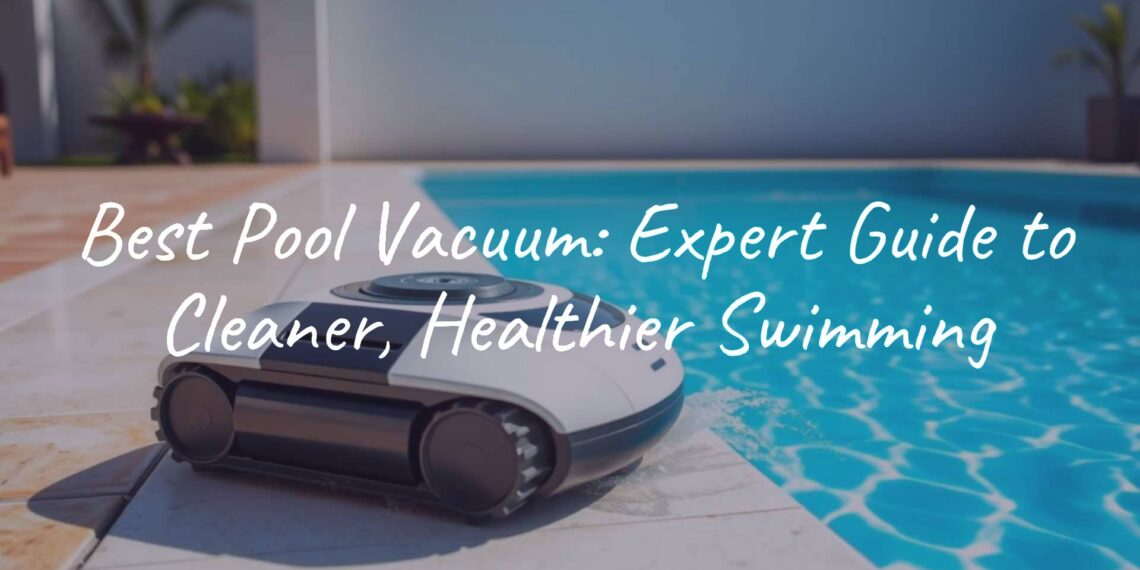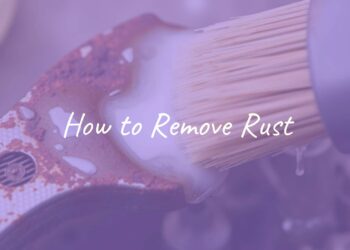Picking the best pool vacuum means finding a cleaner that fits your pool and your routine. There isn’t a single right choice for everyone. You want the right mix of power, efficiency, and ease of use so your pool stays clear without turning upkeep into a headache. Whether you deal with algae, constant leaves, or fine silt, the best vacuum is the one that handles your pool’s main problems quickly so you can swim more and scrub less.
There are many tools out there, from basic manual heads to advanced robot cleaners. Your choice depends on a few key points: pool type and size, the debris you face, your budget, and how hands-on you want to be. The market offers many smart options that make care easier, but knowing what each one does helps you pick well. Here’s what makes a pool vacuum stand out and how to sort the choices to find a good fit.

What Defines the Best Pool Vacuum?
The best pool vacuum isn’t about the biggest motor or the highest price. It’s about features that match your pool and your preferences. A high-quality vacuum should clean well every time, be simple to use and service, and last for years. Think of it as an investment that cuts down on scrubbing so you can relax on weekends.
A great vacuum also helps the overall health and clarity of the water. By catching fine particles that would otherwise load up your main filter, it helps your water chemistry stay stable and lowers the chance of algae. This saves time, reduces work for your other equipment, and can lower costs over the long run.
Key Features to Look For
When comparing pool vacuums, look for features that most often lead to strong results and happy owners:
- Strong suction for leaves, acorns, sand, and fine dust
- Smart movement that covers the floor, walls, and waterline without missing spots
- Advanced filtration that captures tiny particles, not just big debris
- Easy-to-clean filter baskets or bags
- Proven reliability with quality motors, seals, and a solid warranty
Many basic cleaners use mesh screens that let fine silt and algae pass through. Better robotic models use advanced systems like NanoFiltration with pleated, tightly woven polyester that traps pollen, bacteria, and algae. Some, like the Dolphin Premier, add MultiMedia filtration so you can switch filters based on debris type.
Pool Types and Compatibility Matters
Your pool’s design affects which vacuum works best. Is it inground or above-ground? Is it rectangular, kidney-shaped, or freeform? What surface does it have-vinyl, fiberglass, gunite, or tile? These details change how a cleaner grips, moves, and scrubs.
Some robots are made for smooth vinyl liners. Others have strong brushes and tracks for gritty gunite. Above-ground pools often do well with lighter, smaller models, while large inground pools need longer cords, stronger motors, and better path planning to cover every area. A good match isn’t just about fitting in the pool-it’s about working well on that surface and layout.

Importance of Maintenance and Durability
Even the best vacuum won’t stay great if it’s hard to care for. Choose models with easy access to filters and simple designs without fragile parts. A cleaner that always needs tinkering or costly parts will quickly become annoying.
Longevity often comes from quality parts, especially motors and seals. Many higher-end residential robots use commercial-grade motors built for heavy use. A strong warranty shows the maker stands behind the product. Well-built models with easy-to-find parts-like many Dolphins that run a decade or more-can stay a steady helper for years.
Types of Pool Vacuums and Their Differences
Pool vacuums come in many types to fit different pool sizes, budgets, and cleaning needs. Knowing the basics of each type is the first step to choosing the right one. Options range from fully automatic robots to manual tools you guide yourself.
Whether you want the most convenience, the lowest cost, or the most cleaning power, there’s a type for you. Below is a quick comparison before we go into more detail.
| Type | Power Source | Debris Handling | Main Pros | Main Trade-offs |
|---|---|---|---|---|
| Robotic | Low-voltage cord or battery | Onboard filters/baskets | Great cleaning, low energy use, floor/walls/waterline | Higher upfront cost |
| Suction-side | Pool pump suction | Uses main pool filter | Lower price, simple design | More filter cleanings, can miss spots |
| Pressure-side | Return line (often with booster pump) | Own debris bag | Handles large leaves well, protects main filter | Higher energy use with booster, less scrubbing |
| Manual | Human-powered, sometimes battery handheld | Skimmer line or onboard bag | Low cost, precise spot cleaning | Most time and effort |

Robotic Pool Vacuums
Robotic vacuums are the easiest to use and often the most effective. They run on their own power and have their own filters, so they don’t load your pump or main filter. Many come with path planning, weekly timers, and app control so they can run on a schedule without daily input.
Top models like the Dolphin Sigma and Premier use commercial-grade motors, strong suction, and advanced filtration (including NanoFiltration) to capture big and tiny debris. They clean floors, climb walls, and scrub the waterline to remove scum and biofilm. While they cost more at the start, they use little power, clean thoroughly, and can reduce wear on your pool system, saving time and money over the long run.
Suction-Side Pool Vacuums
Suction-side cleaners hook to your skimmer or a dedicated suction port. Your pool pump powers them as they move and pull in debris, which goes to your main filter. They usually cost less than robots and are easy to service.
Models like the Hayward Navigator Pro and Zodiac Baracuda G3 are common picks. They handle sand, dirt, and smaller debris, and some climb walls. The trade-off is that all debris goes to your main filter, so you’ll backwash or clean cartridges more often. This can add load to your pump and filter. Their movement patterns can also be less organized, which may leave missed areas.
Pressure-Side Pool Vacuums
Pressure-side cleaners use return-line water flow (often with a booster pump) to move and sweep debris into an onboard bag. They shine with large debris like leaves and twigs, keeping that junk out of your main filter. A popular model is the Polaris Vac-Sweep 280.
These cleaners often cost more than suction types, especially if you need a booster pump, which also adds to energy use. They usually don’t scrub walls or follow precise paths like many robots, but their ability to handle heavy leaf loads makes them a good choice for leafy yards.
Manual Pool Vacuums
Manual vacuums are the simplest and cheapest option. You attach a vacuum head to a pole and hose, connect to the skimmer or a vacuum port, and move it by hand. It takes time and work, but you get precise control.
Manual tools are great for spot jobs, small pools, or as a backup. They’re especially good for heavy silt because you control the pace. Handheld battery units like the Pool Blaster Max cut cords and hoses for quick cleanup. Every pool owner should have a manual option for quick fixes, even if they use an automatic cleaner most days.
Corded vs Cordless Pool Vacuums
This choice mostly applies to robots. Corded robots plug into a low-voltage power supply and can run full cycles without recharging. Many also include weekly timers and smart path planning. Newer cords use 360-degree swivels to prevent tangles.
Cordless robots use lithium-ion batteries and are very easy to drop in and pull out. But battery life (often 60-120 minutes) can be short for large pools, leading to daily charging and incomplete cycles. Many budget cordless units have weak suction and basic filters. Some brands have also faced safety complaints about battery overheating and fire risk. As of late 2025, many experts still prefer corded robots for steady power and reliable scheduling.
Factors That Impact Pool Vacuum Performance
Beyond the type of cleaner, several factors affect how well a vacuum keeps your pool clear. These include how fine a filter it uses, how fully it covers the pool, how automated it is, and how much electricity it uses. Knowing these points helps explain why some models do better than others.
From tiny particle capture to full-pool coverage and smart scheduling, each part plays a big role. Here are the areas that separate good cleaners from great ones.
Filtration Quality and Particle Size
Filtering is a major factor. Entry-level robots and many traditional cleaners rely on basic mesh. That might catch leaves and twigs but let sand, silt, dust, and tiny algae pass through. This can make water look cloudy and put extra load on your main filter.
Advanced robots from brands like Dolphin use tech such as NanoFiltration. These pleated polyester filters have more surface area and tighter weave to trap pollen, bacteria, and fine algae. The Dolphin Premier’s MultiMedia system lets you pick the right filter-NanoFilters or an oversized leaf bag-based on what’s in your pool. Better filtration clears up water and reduces work for your main filter, which can help it last longer.
Coverage and Waterline Cleaning
How completely a cleaner covers your pool matters as much as how much it picks up. Floors, walls, steps, and the waterline all need attention. Many basic units only vacuum the floor, leaving grime and algae on walls and at the waterline for you to scrub.
Higher-end robots use advanced path planning (like Dolphin’s SmartNav 2.0 or 3.0), stabilizers, and strong brushes to climb and scrub the waterline. Waterline cleaning removes scum, bacteria, algae, and biofilm that cling near the surface. Robots that handle walls and the waterline keep the whole pool cleaner so you don’t have to brush those spots by hand.

Automation and Smart Timers
Automation is a big advantage for robots. Some basic or cordless models need you to start them every time, which can turn into daily work.
Better robots have built-in or app-based schedules for the week. Units like the Dolphin Premier and Sigma offer a Programmable Weekly Smart Timer so they run on their own. The Sigma’s myDolphin Plus App adds remote control, history, and advanced scheduling. This steady routine keeps the pool ready to swim with less effort from you.
Energy Efficiency and Power Consumption
Energy use can affect costs over the life of the cleaner. Suction and pressure cleaners rely on your main pump or a booster pump and can draw a lot of power-sometimes up to 1800 watts.
Modern robots sip power by comparison. Some, like the Dolphin Nautilus Pool Up, run at about 150 watts per hour. Lower energy use can lead to real savings over time while still giving strong cleaning results.
How to Choose the Right Pool Vacuum for Your Pool
Sorting through many models can feel like a lot, but matching a cleaner to your pool is the key to easy, steady results. Think about your pool’s design, the debris you face, how often you want it to run, and your budget. You’re picking a partner for pool care, not just a gadget with specs on a page.
A good choice comes from looking at your setup and how you plan to use it. Here are the main points that guide you to the right option.
Check Your Pool’s Shape and Size
A small, simple above-ground rectangle needs a different approach than a large, freeform inground pool with steps and ledges. For smaller pools, a compact robot or a handheld battery unit can be enough. They are easy to move and store.
For larger or irregular pools, pick a robot with smart path planning and mapping. Many Dolphins with SmartNav can cover corners and curves in an organized way. Wall climbing and waterline scrubbing become very important in big pools. Also check the cleaner’s rated max pool size and whether tracks or wheels fit your surface and design.
Debris Type and Cleaning Frequency
What gets into your pool should guide your choice. If you mostly get fine silt and sand, you need strong micro-filtration. NanoFiltration helps a lot here. Suction-side units can work too but will send debris to your main filter, which needs more cleaning.
For leaves and large debris, a pressure-side cleaner with its own bag or a robot with a big leaf bag, like the Dolphin Premier, makes sense. If you want daily runs, pick a robot with a weekly timer. If you only do spot cleanups here and there, a manual or handheld unit can save money.
Long-Term Reliability and Warranty
A pool vacuum is an investment. A cheap unit that breaks often will cost more in the end. Look for brands known for durable builds, quality parts, and strong owner reviews.
Warranties show confidence. Many top robotic models from Maytronics (Dolphin) carry two- or three-year coverage, while many budget models have one year. Also check parts availability. Brands that sell parts openly make repairs easier and help the cleaner last longer.
Best Pool Vacuums for Common Pool Needs
With many choices out there, the “best” option depends on what your pool needs most. A great cleaner for a leaf-heavy inground pool might be too much for a small above-ground pool with light dust. Match the tool to the job for the best results.
Here are common pool situations and the types of vacuums that fit them well.
Inground vs Above Ground Pool Vacuums
Inground pools are often bigger, deeper, and have steps or coves. They usually need stronger, smarter cleaners. Robotic units with path planning, wall climbing, and strong suction-like the Dolphin Sigma or Premier-are a good fit. Pressure-side and suction-side cleaners can work, but robots offer the most ease.
Above-ground pools are smaller and often use vinyl. Lightweight robots like the Dolphin Escape clean well with a top-load MaxBin and SmartNav 2.0. Handhelds like the Pool Blaster Max help with quick touch-ups. Budget suction options like Hayward Wanda the Whale or AquaBug can also do the job, powered by your pump.
Best for Leaves and Large Debris
Leafy yards need cleaners that handle bulky debris without clogging. The Dolphin Premier is a standout with its MultiMedia system and Oversized Leaf Bag made for heavy leaf loads. Pressure-side cleaners like Polaris Vac-Sweep models also do well thanks to their own debris bags. For suction-side, the Hayward Navigator Pro’s wing-and-skirt design helps gather leaf piles. Look for large-capacity collection and strong suction.

Best for Sand and Fine Particles
If your pool collects sand, silt, dust, or tiny algae, pick a cleaner with high-grade micro-filtration. Robots with NanoFiltration, like the Dolphin Sigma and Premier, use pleated filters that trap very small particles for clear water. The Dolphin Quantum adds a large XXL MaxBin with a NanoFiltration basket for extra capacity. For suction-side, the Zodiac Baracuda G3 is known for picking up gritty debris, though it uses your main filter for capture.
Best for Budget Shoppers
You can get a clean pool without spending a lot. The Blue Helix One offers strong value with a smartphone app (Bluetooth), dual filters, and waterline cleaning for about $499. It lacks NanoFiltration but packs many features for the price. The Dolphin Nautilus Pool Up is another sub-$500 pick for small inground and above-ground pools with wall climbing. For very tight budgets, manual options like the Poolwhale Pool & Spa Vacuum (around $20) or the Pool Blaster Max handheld ($200) handle spot jobs. Suction-side cleaners like the Hayward The PoolCleaner (about $479) offer automatic cleaning using your pump.
Best for Automation and Smart Features
If you want the least effort, go for advanced automation. The Dolphin Sigma includes a gyroscope, triple commercial-grade motors, NanoFiltration, and the myDolphin Plus App with advanced scheduling, remote control, Siri support, and cleaning stats. Its “Connect Anywhere Power Supply” lets you manage it over Wi-Fi. The Dolphin Premier adds a Programmable Weekly Smart Timer and a MediaAlert full-filter indicator for easy use. These models run on a schedule and keep the pool ready with minimal input.
Comparing the Top Pool Vacuum Brands and Models
Some brands stand out for reliable cleaning and steady innovation. They refine their tech year after year to solve common pool problems. Looking at their key models helps show what strong performance looks like.
Here are a few leading names and what sets their cleaners apart, including features, results, and value.
Dolphin Premier and Sigma
Maytronics, the maker of Dolphin cleaners, has a strong reputation. The Dolphin Premier is a favorite for pools with lots of leaves thanks to its MultiMedia filtration. You can choose an oversized leaf bag, a standard mesh filter, or Gen-2 NanoFilters™ based on what your pool needs. Built on the same commercial platform as the Dolphin Wave 75, the Premier adds SmartNav 2.0, an anti-tangle swivel, a Programmable Weekly Smart Timer, and commercial-grade motors. It carries a 3-year warranty and delivers pro-level results for home use.
The Dolphin Sigma is often seen as Maytronics’ most advanced robot. It shares a platform with the Dolphin Wave 80 and adds a gyroscope, triple commercial-grade motors, and four scrubbing brushes. NanoFiltration boosts fine-particle capture. Its myDolphin Plus App offers advanced weekly scheduling, remote control, Siri support, and live stats. With its Connect Anywhere Power Supply, you can program it from anywhere. A 3-year residential warranty rounds out its feature set.
Polaris Vac-Sweep and Other Pressure Cleaners
Polaris is well known for pressure-side cleaners like the Polaris Vac-Sweep 280. It connects to the return line and often uses a booster pump. The 280 is praised for collecting both big and small debris, and its TailSweep helps brush debris from corners. It can clean an inground pool in about three hours and can stay in the water between cycles.
There are trade-offs. Booster pumps use more energy, and standard pressure-side filters may miss fine particles compared to nanofilters in many robots. Some Polaris robots still use wheels, which can struggle on walls compared to tracks. Warranties are often shorter (1-2 years) than the 3-year coverage found on top Dolphin models. The 280 is still a strong choice for heavy leaves, but many owners are moving to fully electric robots for better filtration and automation.
Hayward Navigator Pro and Suction-Side Leaders
Hayward makes reliable suction-side cleaners, including the Hayward Navigator Pro. It’s a solid pick for inground pools with lots of leaves. Preprogrammed steering and a wing-and-skirt design help it move around and grab big leaf piles without getting stuck. It runs quietly and holds a lot of debris.
Suction-side models connect to your skimmer or suction line and use the pump to move and collect debris, which goes to your main filter. They cost less and are simple to handle but will mean more frequent filter cleaning. The Hayward The PoolCleaner Suction Cleaner is another favorite for its light weight and corner performance. Most suction units don’t scrub walls or clean the waterline like robots and have no onboard filtration.
Aiper and Blue Helix One
Brands like Aiper and Blue Helix focus on cordless robots or budget wired units. The Blue Helix One stands out as a value robot for about $499, offering a Bluetooth app, dual filter baskets, and waterline cleaning. A “Focus Cleaning” mode lets you target floors, walls, or just the waterline. It doesn’t include NanoFiltration, but the feature set is strong for the price.
Aiper’s cordless robots, such as the Scuba S1, are praised by some for portability, but many experts say they are underpowered versus corded units, with lower flow and weaker suction. There have also been many public complaints about lithium-ion battery safety, including reports of overheating, smoke, sparks, and fires. Review trust tools have flagged some listings, and as of late 2025, many experts recommend avoiding cordless lithium-ion pool robots due to safety and performance concerns. Cordless freedom is appealing, but current models call for caution.
Common Questions About Pool Vacuums
Choosing and caring for a pool vacuum brings up many questions. Clear answers make it easier to pick the right tool and keep it running well.
Here are straight answers on manual vs automatic cleaning, cordless safety, and routine upkeep.
Should You Choose a Manual or Automatic Pool Vacuum?
A manual vacuum costs the least and gives tight control for spot cleaning and stubborn areas. It takes time and effort, so it’s best for small pools, occasional use, or as a backup tool.
An automatic vacuum includes robotic, suction-side, and pressure-side cleaners. Robots offer the most independence, cleaning floors, walls, and the waterline on a schedule. They save a lot of time, which suits busy owners and large pools. Suction and pressure cleaners also run on their own but may need more oversight or add load to your pump. If saving time matters most, pick a robot. If budget comes first and you don’t mind the work, manual is fine.
Is Cordless Safe and Reliable for Pool Cleaning?
Cordless robots avoid cords and are easy to use, but many current models fall short on power and run time. As of late 2025, many experts-such as those at Poolbots-advise against cordless robotic pool cleaners that use lithium-ion batteries due to safety complaints and weaker performance.
Common issues include reports of overheating batteries and short run times that don’t cover larger pools in one charge. Daily charging reduces convenience. New corded robots with 360-degree swivels avoid tangles and deliver steady power. For steady, safe, and strong results, corded robots are the safer bet right now.
What Maintenance Is Involved with Pool Vacuums?
All pool vacuums need basic care to work well and last. Clean the debris basket or bag often. For robots, rinse the filter after each use or every few cycles. NanoFilters may need deeper rinsing at times. Check brushes for wear and clear any blockages at the intake.
Suction and pressure cleaners need hose checks for leaks or clogs. Suction-side models send debris to your main filter, so plan on more backwashing or cartridge cleaning. Empty and rinse pressure-side bags often. For all types, inspect wheels, tracks, and seals. Remove the cleaner after each cycle to reduce chemical exposure and store it dry in a cool, shaded place.
Maximizing the Value of Your Pool Vacuum
To get the most from your cleaner, think past the purchase price. The goal is strong cleaning, long life, and less time spent on upkeep. A few habits can extend the life of your unit and make pool care easier.
Know what your cleaner can do, take care of it regularly, and upgrade when your needs change or performance drops.
Proper Use and Storage Tips
How you use and store the vacuum affects how well it works over time. Keep water chemistry in range before running any cleaner, since harsh levels can damage plastics and seals. For robots, lower them gently into the water to release trapped air. Keep power supplies dry and away from the edge.
After each cycle, always take the cleaner out. Long soaks in chlorinated water wear parts. Rinse the filter and the unit with fresh water and let it dry. Store indoors or in a shaded, cool spot. Neatly coil cords to avoid kinks. These small steps help the cleaner run smoothly for longer.
Preventing Common Issues and Extending Lifespan
Stopping small problems early saves money. Many issues start with dirty filters and blocked inlets. Keep filters clean and hoses clear. Maintain your pool pump and filter, since suction and pressure cleaners rely on them.
For robots, watch brush and track wear. Replace worn parts to keep grip and scrubbing strong. If wall climbing gets worse, check brushes and filters first. Anti-tangle swivels help, but straightening the cord now and then also helps. Regular checks and quick fixes keep repairs small and extend the cleaner’s life.
When to Upgrade Your Pool Cleaning Equipment
Even with good care, a time comes to replace or upgrade. If breakdowns are common and repairs get pricey, a new cleaner may cost less over time. If parts are hard to find or too expensive, upgrading makes sense.
If your vacuum leaves dirty spots, misses the waterline, or struggles on walls, it may be losing power or using outdated filters and path planning. If your yard now adds more leaves, or you want a more hands-off setup, moving to a newer robot with better filtration, smart features, and full coverage can make pool care much easier.
Final Thoughts: Selecting the Best Pool Vacuum for Cleaner, Healthier Swimming
Choosing the best pool vacuum is about peace of mind, less work, and a pool that’s always ready. The right pick depends on your pool and your daily routine, not just specs on a box.
A clean pool looks great and supports good hygiene. A strong vacuum helps by clearing visible debris and also easing the load on your main filter, supporting stable water balance and slowing algae growth. Think about your pool’s needs, pick a cleaner that fits, and enjoy many seasons of clear, inviting water.
















![What to with Scrap Metal? [infographic]?](https://facts-homes.com/wp-content/uploads/2019/07/645413-POPYOV-391-120x86.jpg)





